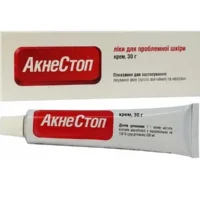Description
Dofamin (Dopamine Hydrochloride) Concentrate for Infusions 5 mg/ml. 5 ml. Ampoules №10
Ingredients:
Each 5 ml ampoule contains 25 mg of dopamine hydrochloride as the active ingredient.
Mechanism of Action:
Dopamine, a precursor to norepinephrine, acts on adrenergic and dopaminergic receptors. At low doses, it dilates renal and mesenteric blood vessels. At moderate doses, it stimulates beta-1 adrenergic receptors, increasing cardiac contractility. At high doses, it constricts arterioles and increases systemic vascular resistance.
Pharmacological Properties:
Dofamin exerts its effects by modulating vascular tone and enhancing cardiac function. It increases myocardial contractility, heart rate, and blood pressure by its actions on different receptors.
Indications for Use:
Dofamin is indicated for the treatment of hemodynamic imbalances in conditions such as shock, trauma, sepsis, and congestive heart failure.
Contraindications:
Avoid using Dofamin in patients with pheochromocytoma, ventricular fibrillation, or hypersensitivity to dopamine or any component of the formulation. Use with caution in patients with tachyarrhythmias or hypovolemia.
Side Effects:
Common side effects of Dofamin include tachycardia, arrhythmias, hypertension, extravasation leading to tissue necrosis, and electrolyte disturbances. Severe side effects may include myocardial ischemia, mesenteric ischemia, and digital ischemia.
Usage Instructions:
The dosage of Dofamin should be individualized based on the patient’s hemodynamic status. It is typically administered by continuous intravenous infusion under close medical supervision.
Benefits Compared to Analogues:
Dofamin offers advantages over other vasopressor agents due to its ability to enhance renal blood flow and urine output, making it beneficial in patients with compromised renal function.
Suitable Patient Groups:
Dofamin can be used in adult patients, including the elderly, with careful monitoring of cardiovascular and renal function. Its use in pediatric patients should be determined by a healthcare provider based on the clinical scenario.
Storage and Shelf Life:
- Store Dofamin at controlled room temperature between 20°C to 25°C (68°F to 77°F).
- Protect from light and freezing. Do not use if the solution is discolored or contains particles.
- Check the expiration date on the packaging before use.
Packaging Description:
Dofamin is supplied in 5 ml ampoules, each containing 25 mg of dopamine hydrochloride. The product is available in packs of 10 ampoules.
Clinical Evidence and Proven Effectiveness:
Clinical studies have shown that dopamine, the active ingredient in Dofamin, is effective in improving hemodynamic parameters and outcomes in patients with distributive shock, such as septic shock. For instance, a study by De Backer et al. (2010) demonstrated that dopamine was associated with a higher rate of blood pressure restoration compared to norepinephrine in septic shock patients.





